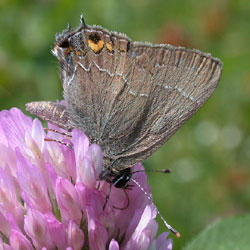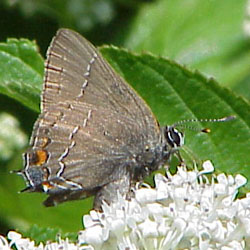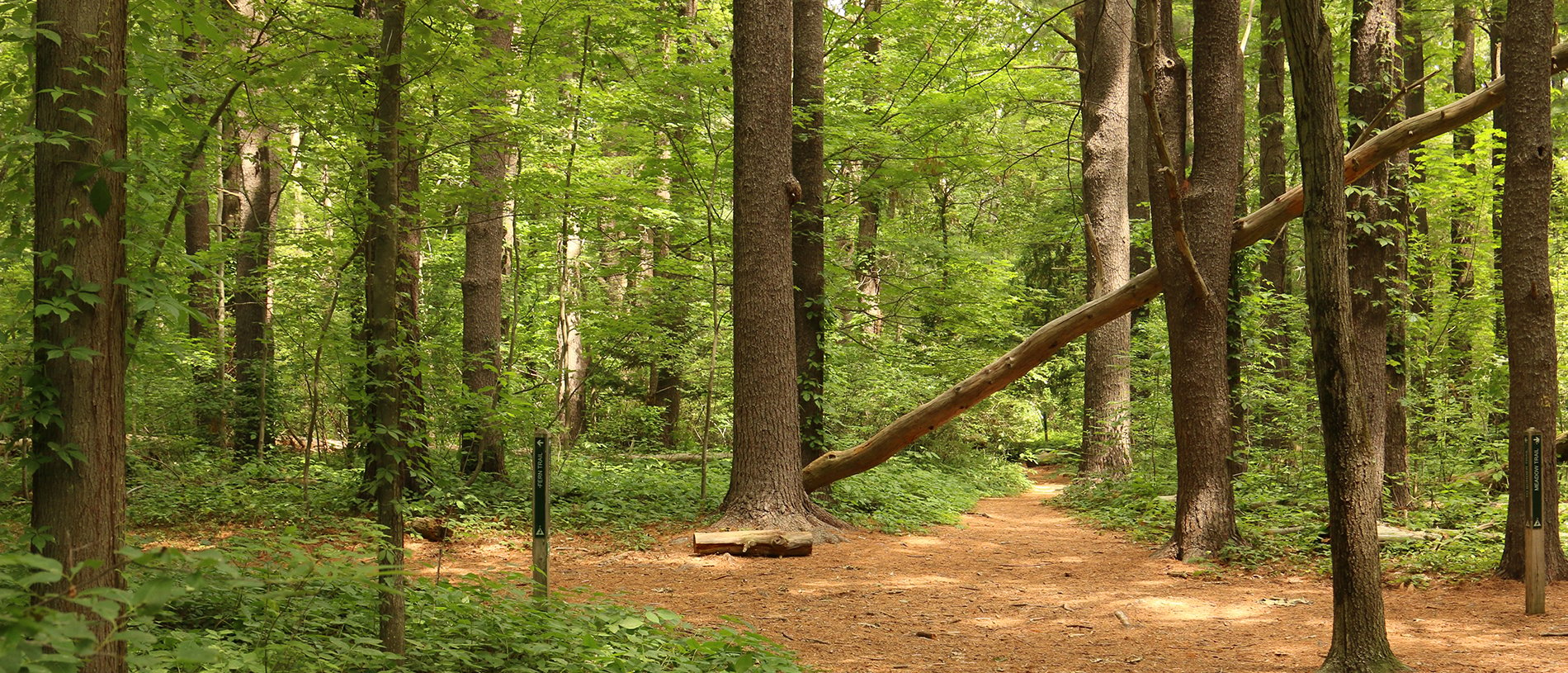Butterfly Atlas
Find a Butterfly
Oak Hairstreak
Satyrium favonius
Named
J. E. Smith, 1797

Taxonomy & Nomenclature
Once known as Northern Hairstreak (Euristrymon or Fixenia ontario) and thought to be distinct from Southern Hairstreak (Fixenia favonius). Taxonomic revision, however, has combined the two entities and they are now considered a single species named for their preferred larval host.
Identification
Wingspan: 1 - 1 1/4". Oak Hairstreak is gray brown above and below. The most distinctive mark is found on the underside of the hindwing where a thin black and mostly white midline forms a large, conspicuous "W". In Massachusetts, Oak Hairstreak may be confused with Gray Hairstreak (Strymon melinus). Fresh specimens of melinus are distinctive, being slate gray above and dove gray below as well as lacking the "W" of Southern Hairstreak. Difficulties may occur, however, with faded and worn specimens as markings become indistinct and both species fade to a dull brown.
Distribution
Central Texas northeastward to the southern terminus of the Great Lakes and east to Massachusetts. Eastward from the Texas Gulf Coast to the Atlantic Coast. Several disjunct populations in the Southwest. In New England restricted to Rhode Island, Connecticut, and Massachusetts.
Status in Massachusetts
Rare and local. Found only in six quadrangles during the Atlas period in a narrow belt extending east from Worcester to Boston and southwest to the southern Blackstone Valley region. The status of Southern Hairstreak has apparently changed little since the late 1800s when Scudder (1889) used phrases like "this rarest of our Theclae" and "no other butterfly confined to our Fauna is so little known." Scudder notes records from Amherst and Waltham. No additional records noted by Farquhar (1934), who mentioned only the Waltham records from Massachusetts. Maximum: 4, 7 July 1992, Foxboro. More were counted in 1992 than all Atlas years. Oak Hairstreak is listed as a species of Special Concern under the Massahcusetts Endangered Species Act.

Flight Period in Massachusetts
One flight. Late June to mid July. Extreme dates: 23 June 1994, Broad Meadow Brook Sanctuary (Worcester Co.), T. Dodd; and 26 July.
Larval Food Plants
Oaks (Quercus spp.), including White Oak (Q. alba) and Scrub Oak (Q. ilicifolia) and perhaps hawthorns (Crataegus spp.).
Adult Food sources
Recorded on New Jersey Tea, Meadowsweet, Yarrow, Common Milkweed, Swamp Milkweed, and Maleberry.

Habitat
Scrub areas with dry, poor soil and sparse vegetation.
Life Cycle
EGG: not described. OVIPOSITION: eggs laid singly on the male, catkin-producing, host plant. LARVA: Pale green with various dark green and yellow lateral stripes; bores into flowers of food plants and also feeds on pollen and young leaves (mature larva). CHRYSALIS: pale brown mottled and spotted with black. OVERWINTERING STAGE: Egg.
Notes
1992 was an exceptional year for Southern Hairstreak in Massachusetts. Between late June and mid July at least eight individuals were found in six locales.
Account Author
Richard Hildreth



